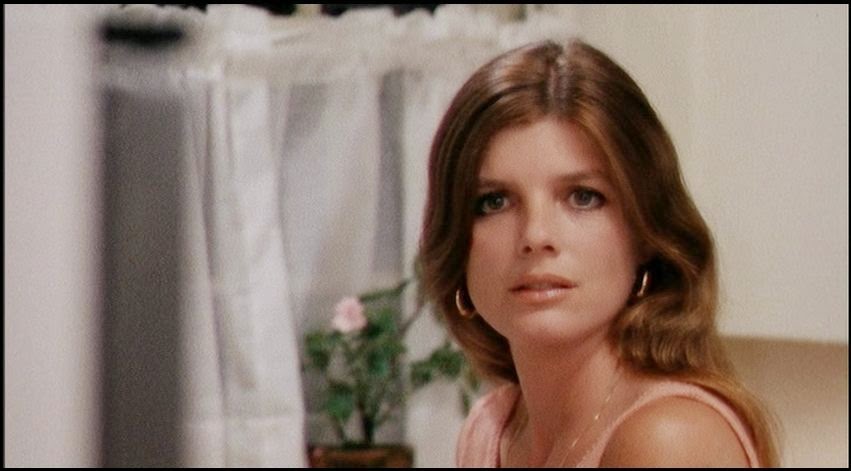 |
| "Leave her to heaven, and to those thorns that in her bosom lodge to prick and sting her." William Shakespeare "Hamlet" |
 |
| Gene Tierney as Ellen Berent |
 |
| Cornel Wilde as Richard Harland |
 |
| Jeanne Crain as Ruth Berent |
 |
| Vincent Price as Russell Quinton |
No film better exemplifies this than that Technicolor noir classic, Leave Her to Heaven. A film of such alluring visual overripeness that one can easily forget that it is probably one of the darkest and most twisted visions of familial dysfunction ever to come out of post-war era Hollywood.
Leave Her to Heaven is a rarity in the world of 40s film noir: the darkness occurs in the bright (and colorful) daylight. And at the center of this bright-hued nightmare is perhaps one of cinema's most relentlessly evil monsters. The monster in question? None other than the austerely exquisite Gene Tierney (saved from bland perfection by a charming overbite), fulfilling, in her role as socialite Ellen Berent, the long-standing film noir edict that any female that desirable has got to spell nothing but trouble.
 |
| Femme Fatale Red Flag #23: Really big monogram |
 |
| Babe Alert! We feel your pain, Ellen. |
 |
| Wedded Bliss...or else! |
The '30s and '40s may have been boom years for the “women’s film” (movies with female protagonists, told from a woman’s point of view, marketed to a female audience) but film noir always seemed to be lurking in the shadows, contrasting all those sunny Mrs. Miniver & I Remember Mama images of femininity with vitriolic visions of women intent on the destruction of the male.
Indeed, the fear of women is what sex in film noir is all about. The twist in Leave Her to Heaven is that the almost ethereally beautiful Tierney lacks the obvious sexual threat of, say, a Joan Crawford, Bette Davis, or Barbara Stanwyck— all of whom looked as if they’d just as soon plunge a pair of scissors into your back as look at you. Tierney's Ellen Berent is the ultra- scary female writ large because she looks like so many of the pin-ups and girls-next-door of the era. Made up to resemble every brunette Gene Kelly ever pursued in a wholesome musical, it’s quite startling when Tierney reveals herself to be a sick ticket of the order rarely seen in Production Code era movies.
 |
| Sweet as pie |
 |
| The "crazy eyes" first make their appearance |
Gene Tierney gives the performance of her career and is the absolute embodiment of star power in this, her Academy Award nominated role. Though her character has all the trappings of overheated melodrama (overblown emotions, ostentatious glamour), she brings a level of assuredness to her portrayal that dares you to turn it into camp. Scene after scene dances right on the edge of being a real howler on par with Lana Turner during her Ross Hunter period - or any period Douglas Sirk - but there's something about the truth of her characterization (we don't like Ellen, but we "get" her) that keeps the film on track. She's terrific.
The famous "Swim in the Lake" sequence
THE STUFF OF FANTASY
Who else? Gene Tierney. Outside of Vanessa Redgrave in Camelot, Julie Christie in Petulia, or Faye Dunaway in that big party scene in The Towering Inferno, I can’t think of another film in which a mere mortal was made to look like a fairy-tale goddess. (And if you haven’t seen Ms. Dunaway in that movie, do yourself a favor and rent it for that sequence alone. She and her cheekbones manage to upstage both Steve McQueen and Paul Newman, and she should have won a special Oscar just for keeping that jaw-dropping gown up.)
Now THIS is what a movie star looks like!
The cinematography in Leave Her to Heaven -
David Lean meets Alfred Hitchcock
I came across this film relatively recently, and as a big fan of movies featuring overdressed bad girls, I was stunned that I had somehow missed Leave Her to Heaven in my youth (I mean, did Carol Burnett ever do a parody of this movie?). Anyway, fully expecting to be treated to a howling camp-fest of lacquered cheese, I was surprised, if not shocked, at what a powerful film it is. I mean, the various conflicts and tragedies are the stuff of melodrama, but they somehow have real emotional bite...a palpable feeling of despair. I was overwhelmed by how artfully the film was constructed and how daring its themes were. Who would ever think a major motion picture from the 1940s would include this exchange:
Ellen- (Referring to her unborn child) "I hate the little beast, I wish it would die!"
Ruth- "How can you say such wicked things?"
Ellen- "Sometimes the truth is wicked."
 |
| And I'll never let you go. Never, never, never... |
Copyright © Ken Anderson










































.jpg)